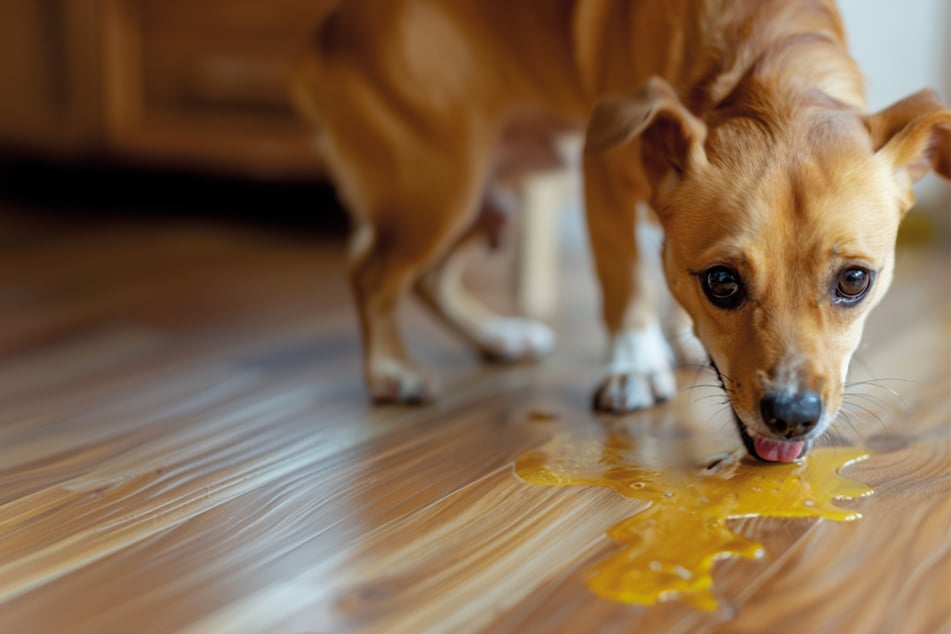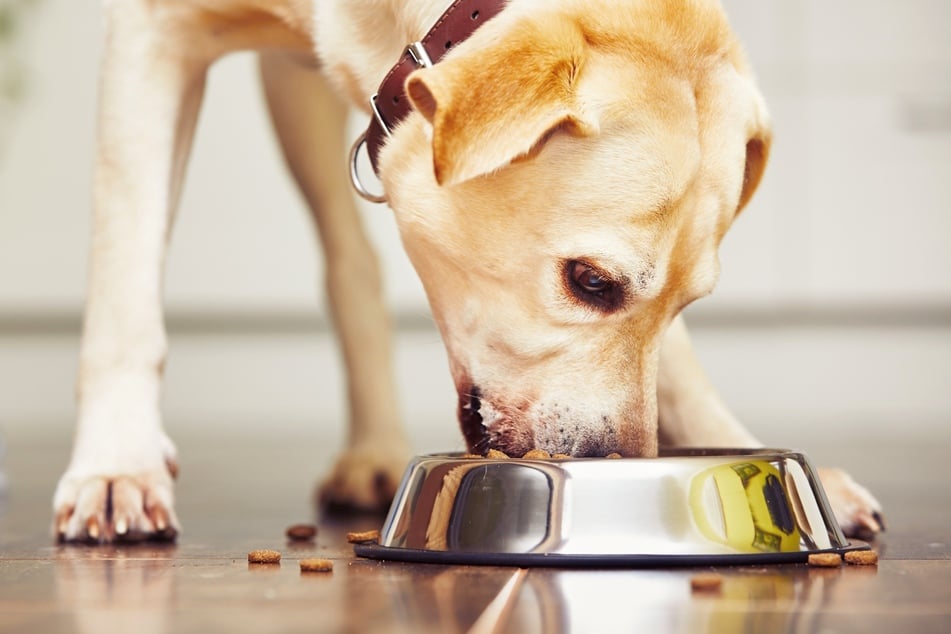Dog vomiting yellow: why does it happen, what can you do about it, and when do you need to call a vet?
A dog vomits yellow when its stomach is empty or irritated. Bile gives the vomit its yellowish color. In this dog guide, you can find out what bile vomiting is all about and when action needs to be taken quickly.
Dog vomiting yellow: Not always a cause for concern

Vomiting is an important protective reflex of the body that is intended to prevent damage to health.
Toxins, foreign bodies, and harmful foods are expelled from the body as quickly as possible without first passing through the entire intestine.
But dog owners are often very worried as soon as their dog vomits yellow. What is behind this?
Yellow vomiting in dogs can be attributed to a number of factors, but for the most part, it is bile vomiting.
This is when a dog vomits a mixture of bile and gastric juice. Bile is produced in the liver and is necessary for the digestion of fats.
As soon as a dog has not eaten for a long time or eats too quickly, bile can enter the stomach. This, in turn, quickly leads to nausea and vomiting.
If a dog only vomits yellow once and the vomiting stops as soon as it has eaten, there is no need to worry for the time being. In some cases, however, dog owners should visit a veterinary practice – preferably on the same day.
When is yellow vomiting in dogs dangerous?
Although yellow vomiting in dogs is often comparatively harmless bile vomiting, dog owners should be vigilant and observe their pets over the next few hours.
If it is bile vomiting due to an empty stomach, there are generally no further symptoms. After the dog has eaten, the vomiting usually stops completely.

The following symptoms should be taken seriously and require a veterinary examination.
- Loss of appetite can be a sign of a serious underlying illness.
- Diarrhea may indicate a gastrointestinal infection or an infection of other organs.
- Lethargy can occur if the dog has an illness that triggers vomiting.
- Fever can indicate an infection or inflammation in the body.
- Strong salivation can be a sign of nausea or abdominal pain.
- A bloated stomach can indicate a torsion in the dog's stomach or an inflammation in the body. An accumulation of gas can also be the cause.
- Blood in the vomit (or stool) can be a warning sign of inflammation or injury in the gastrointestinal tract – in which case you should take your dog to the vet immediately!
Important in the event of vomiting: If dogs vomit a lot, they lose a lot of fluids. Dog owners should make sure that their pets drink enough water to make up the difference and avoid dehydration.
Possible causes of yellow vomiting in dogs
The possible accompanying symptoms of yellow vomiting clearly show there are many possible causes. These causes can be divided into those that are acute and indicative of illness.

Acute causes
- Empty stomach
- Gulping
- Ingestion of too much, spoiled, or incompatible food
- Poisoning
- Inflammation of the stomach or intestines
- Infections with bacteria, viruses, or parasites
If the symptoms persist for days or weeks and appear independently of food intake, this indicates a serious illness.
Possible serious illnesses
- Liver disease
- Kidney disease
- Diabetes
- Pancreatitis
- Tumors
- Addison's disease (loss of function of the adrenal cortex)
Important: In order to have everything clarified and to get the dog fast and efficient treatment, you should consult a vet as soon as possible. Using various examination methods, they can find out what is wrong with your furry friend and treat it (with medication).
Tip: It can be enormously helpful in making a diagnosis if you take samples of the vomit or feces to the vet.
What calms the stomach after a dog has vomited?

Dogs vomit very frequently in their lives, usually for harmless reasons such as an empty stomach or eating too quickly.
If diarrhea is also present but the dog appears stable overall, many veterinarians assume that it is a gastrointestinal infection. Such an infection usually subsides within 24 hours.
To help a dog recover, you should do the following:
- Provide water to ensure adequate hydration
- Allow plenty of rest
- Provide a warm and cozy environment to recuperate
- Do not feed as long as the vomiting persists
- Offer carrot soup once the vomiting has stopped (generally only after 24 hours)
Nevertheless, yellow vomiting in dogs should not be taken lightly. If there is even the slightest suspicion of a serious health risk, the dog should be taken to the vet.
Yellow vomit is harmless in most cases
It is quite common for a dog to vomit yellow. In most cases, it is harmless bile vomiting because the four-legged friend has not eaten for a long time or has eaten far too quickly.
The stomach acid and bile mixture causes nausea and ultimately leads to vomiting. Dogs usually feel fine again afterwards or, at the latest, when they eat again.
Nevertheless, vigilance is required to distinguish harmless yellow vomiting without further symptoms from possible serious illnesses. If in doubt, consult a veterinarian.
Cover photo: Midjourney/TAG24

